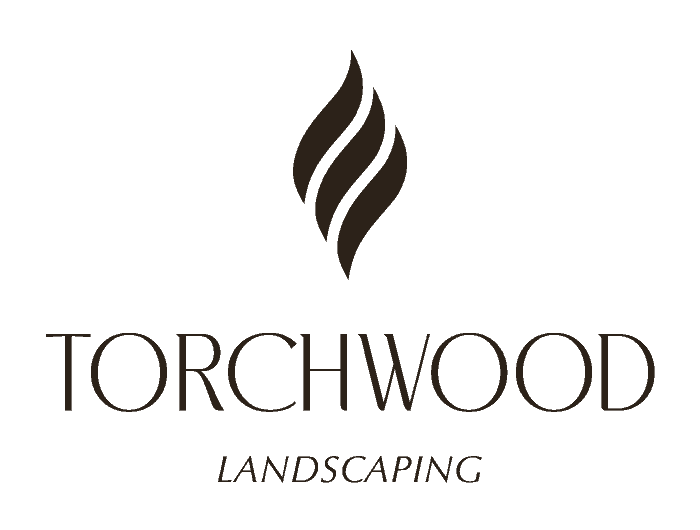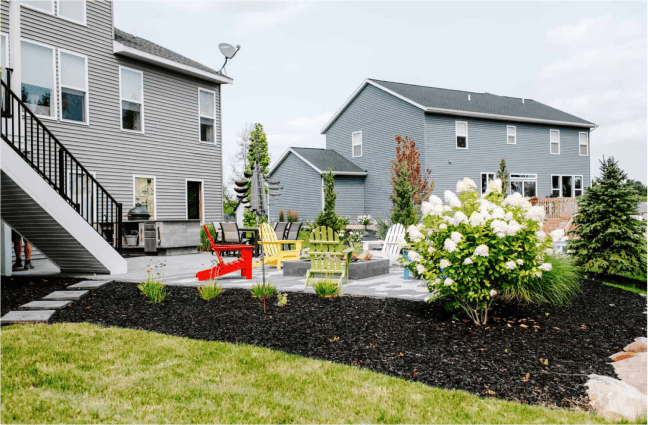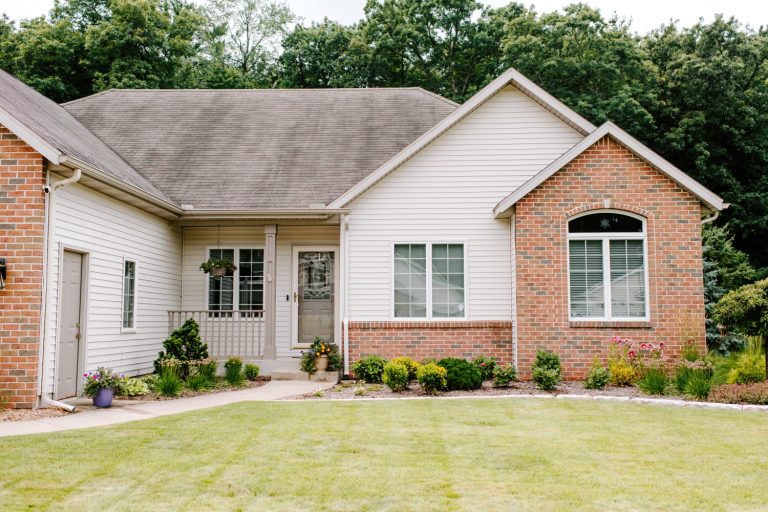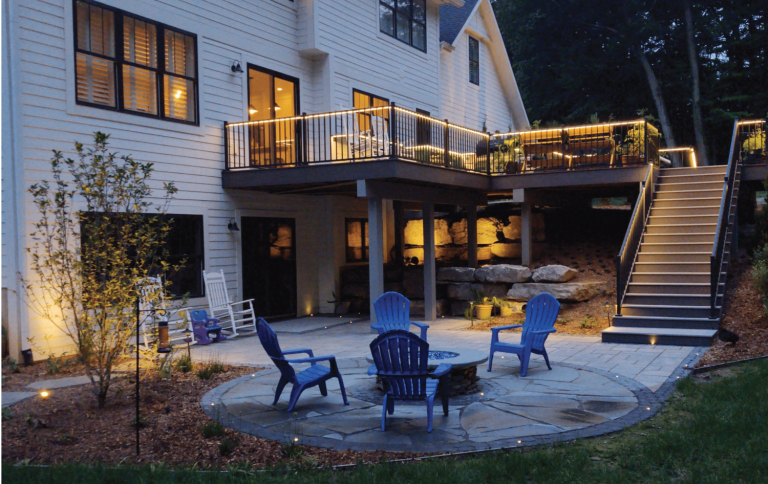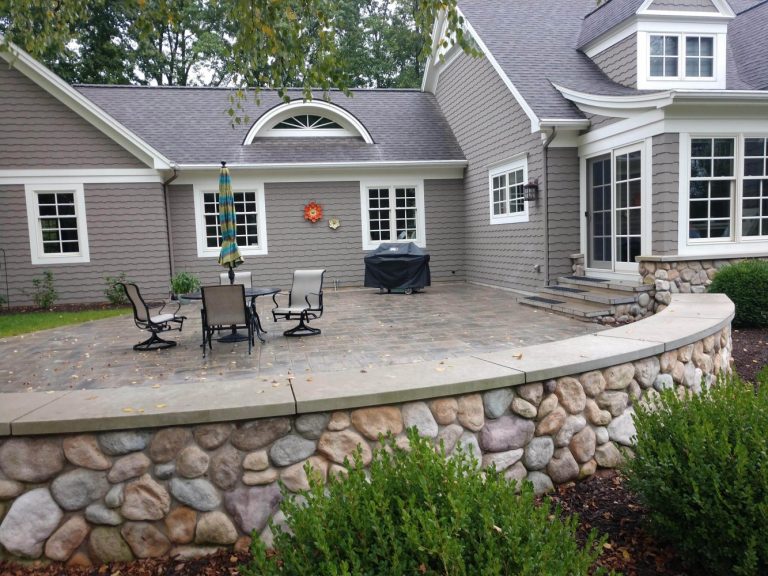Your backyard should be a place you enjoy. It’s somewhere you can feel apart of nature, enjoy time with your family, or entertain guests. It’s an extension of your home that you should feel just as comfortable in. That’s why so many people opt to create outdoor living areas in their backyards.
An outdoor living space can be many things, but ultimately it’s a place where you can bring the indoors outside. Creating your perfect outdoor environment is a process, so we’ve created this blog to help you through it. We’ll discuss the different types of outdoor living areas, how to design them, what it might cost, and all the extra details you can include. Let’s dive in!
Types of Outdoor Living Areas

When you think about an outdoor living space, what comes to mind? You might think of an outdoor kitchen, a pergola, or a furnished patio. Perhaps you beautiful stone, plants, or wood features. These elements and more can all be brought together to create an outdoor living area where you can eat with family, curl up with a good book, or throw a party.
The point of these outdoor areas is to give you a comfortable, functional space to enjoy being outside. That’s why most outdoor living spaces are designed with direct connections to the natural environment. For example, patios keep your feet dry with cement or paver surfaces, but leave room for a cool breeze to pass through and provide an unobstructed view of the grass and flowers. They can also extend the living space of your house and create a gathering space outside.
All in all, outdoor living areas should make you feel at home in your own backyard. For most people, this is created from one of three common spaces.
Dining Area
Dining areas can come complete with an outdoor kitchen or be a simple seating area around a dining table. These are great places for the family to get together and enjoy a meal when the weather is nice. You can even invite friends over for a grill night and have fun eating al fresco. (Plus, it means you don’t have to dirty your kitchen!)
Seating Area
Maybe you like sitting outside with a cup of coffee and a good book. Or you enjoy watching the game on your big screen while you enjoy warm weather. Whatever your preference, an outdoor seating area is a great way to add living space to your home and provide a retreat from the indoors. Patios and meditation gardens are common outdoor seating areas, complete with furniture and sometimes even technology.
Party Space
If you love being the host, then creating a party space in your backyard might be the perfect fit for you. Things like pop up gazebos, pull out patio awnings, and fire pits can all turn your space into party central. Small decorations such as twinkle lights, garden lights, and paved pathways through the grass and plants can also make your space more conducive to large groups.
How to Design an Outdoor Living Area
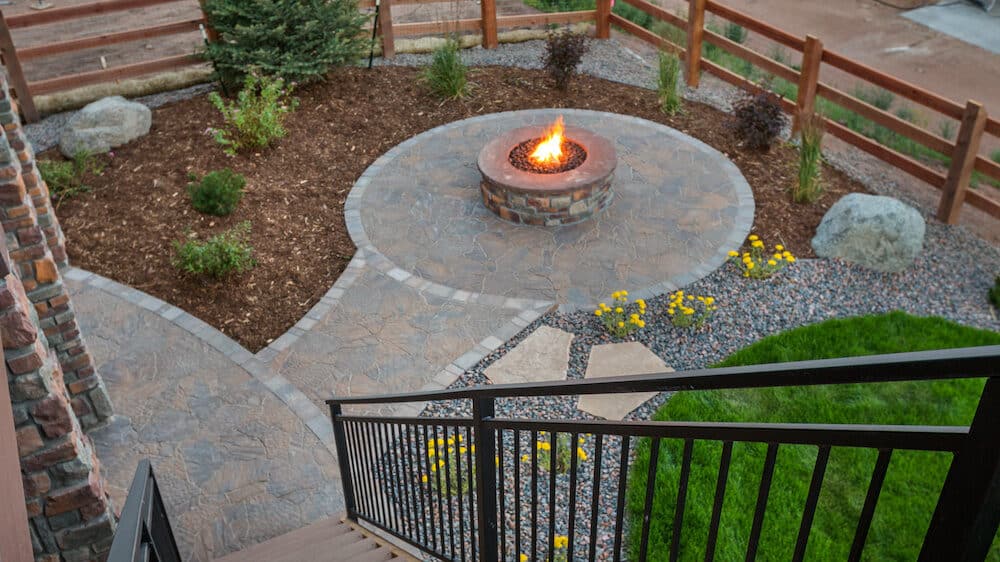
The Process
Designing an outdoor living area is a similar process to renovating or adding on to your home. It requires planning, research, and expert help. There are five main steps to work through when starting the design process:
- Set a goal for your space. What kind of space are you looking for? What structures do you want to include? Are there specific materials or plants you want to see? Try to make a list of ideas and reasons why you want to add a livable space to your backyard. This will help you narrow down exactly what you need.
- Set a budget. Next, you need to decide how much you’re willing to spend. Project costs can vary greatly depending on what materials you need and how much labor is required. (We’ll talk about cost in more detail later in this article.) Try to set a realistic budget and work within what you can afford.
- Assess your options. Look at the types of structures or spaces that are within your budget and assess how they might fit in your space. Consider things like the size of your yard, the natural topography, and how an addition will fit within the existing design.
- Do some research. Now that you have an idea of what you’d like in your own yard, try to see how other people execute the same plan. This can give you some inspiration and maybe even show a few layouts you hadn’t thought of.
- Partner with an expert. The final step to creating your outdoor living space is to partner with an expert. Professionals will offer advice, help you make smart decisions, and keep the whole project on track as you build.
The Size
The size and shape of your outdoor space can make a big difference in the overall effect. For this reason, you should use your existing space wisely. For example, if you have a large backyard you can put in a wide-reaching patio with a cement foundation and it won’t encroach on the size of your natural space. But if your yard is smaller, then you might opt for a tucked away seating area created with stones or pavers.
Even with small space, you’ll still need a good bit of square footage to add a living area outside. As you calculate how large you want your space to be, remember to include walking areas around the edges and space to add some landscaping.
The Style
If you’re going through all the trouble to create an outdoor living area, you want it to look great. As you prepare to paint and add touches of decor, consider these popular outdoor design trends:
- White paint on structures or details
- String lights
- Synthetic wicker furniture
- Iron furniture for areas exposed to harsh weather
- Fans on patios and porches
- Garden lights
- Green walls or hanging plants
Each of these design elements can elevate your outdoor space to new heights. They enhance the ambiance while providing a comforting, modern feel. But you can’t do it all yourself…
The Professionals
When creating an outdoor space, you want to treat it the same as a home renovation or addition. That means you need a team of professionals to help you get it right the first time.
The first person to look for is a professional landscaper. At Torchwood Landscaping, we have a modeling process we use to design your landscaping so you can see the final product before work begins. Next you’ll want to look for a contractor (if you’re building something) and a designer to help you make the space your perfect balance of cozy and chic.
Cost of an Outdoor Living Space
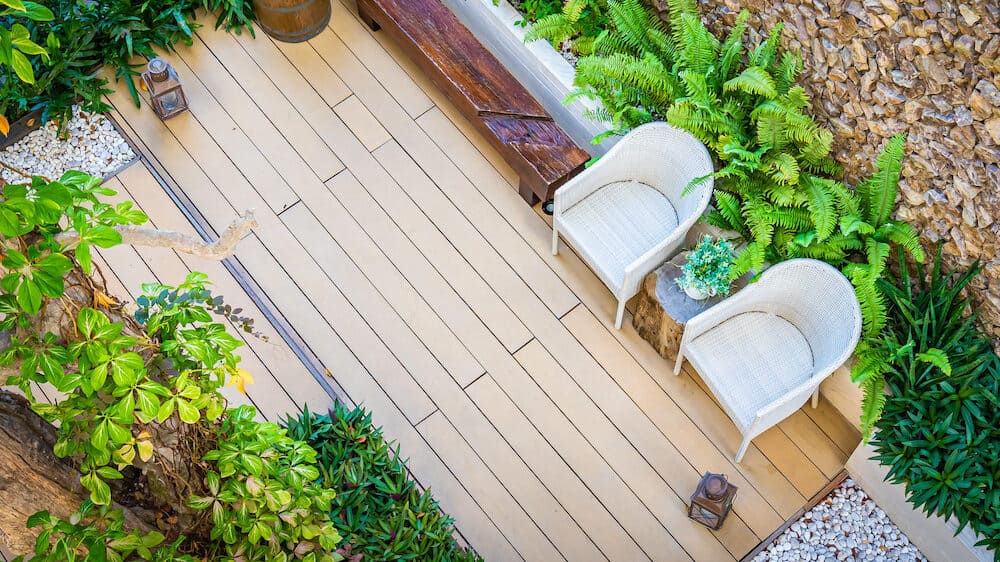
The price tag on your outdoor space can vary greatly depending on what you want to create. The average cost for a new outdoor area is about $45,000 and this encompasses a new space with some landscaping and furnishings.
For smaller projects, like a patio without extra landscaping, you could be looking at costs as low as $15,000. Meanwhile, a larger scale outdoor living space with patio, deck, outdoor kitchen, landscape lighting, and a few other amenities can run north of $100k.
You can get a vague idea of how much your project might cost by looking at the cost of materials needed. Browse the internet or walk through your local home renovation store to see how much pavers, wood, flowers or sod cost. But remember, this doesn’t factor in labor and equipment usage.
The best way to find out how much your project will cost is to contact the experts directly. At Torchwood Landscaping, we share project estimates on our website. This transparency is meant to help guide you in the planning process. From their, we recommend you download our Look Book which includes examples of our recent projects with their costs. Once you’re ready to begin a project, we’ll give you a cost estimate in the design phase.
Extra Elements for Your Outdoor Living Area
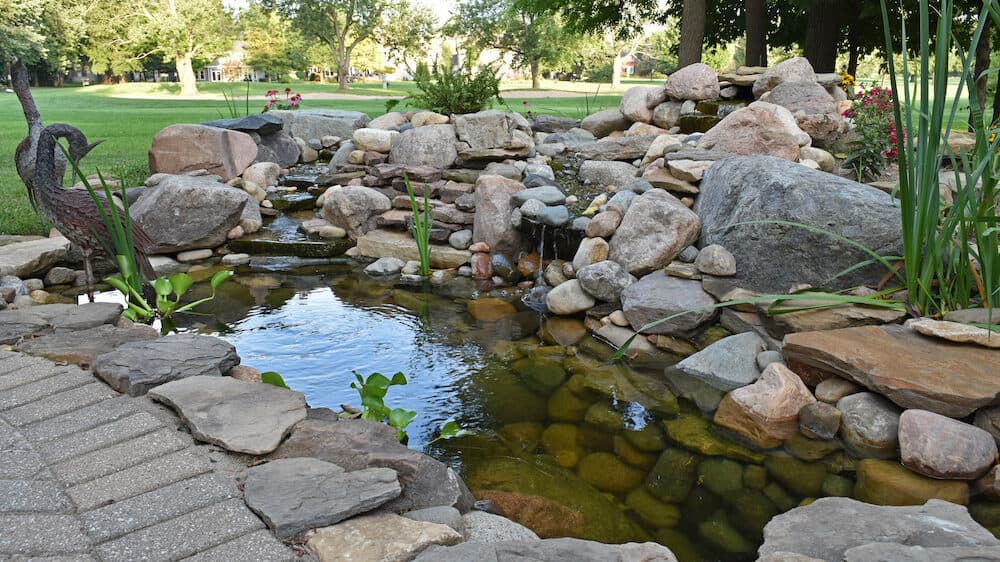
No outdoor living area is complete without a beautiful yard to host it. To liven up your backyard oasis, consider some of these extra elements that are easy to add and can greatly enhance your space.
Fire Pits
Fire pits are a great way to make a cool evening cozy or a cookout more exciting. There are plenty of different styles and designs when it comes to fire pits, so you’re sure to find one that matches your taste. Some of the most popular are raised brick fire pits that can be constructed in any shape, or sunken fire pits that sit nicely in the middle of your seating area.
When deciding on where to install your new backyard accessory, keep in mind that safety should always come first. A wood burning fire pit should be placed in a level area at least 15 feet away from any structure and your home. You also want it to be in an open area that is free of fire hazards like hanging trees or lush landscaping. Gas fire pits, meanwhile can be placed just about anywhere.
Water Features
Water features can add some “wow” factor to your outdoor living area. Some of the most popular choices include ponds, fountains, waterwalls, and waterfalls. They can range in size and bring a few helpful benefits to your space such as peaceful sounds and interesting wildlife.
One thing to keep in mind with even the smallest water features is that they do require regular maintenance. It’s wise to skim leaves, check the pumps, and test the water pH regularly to ensure the health of your feature and any fish you might have living in it.
Hardscaping
Hardscaping refers to all of the non-living elements in your outdoor design, such as bricks, pavers or gravel. This design technique is picking up steam lately as more people try to find eco-friendly landscaping solutions or create spaces that thrive in high-temperature climates.
It’s also a great solution if you want a low-maintenance backyard. You can create diverse textures and designs without adding to your list of outdoor chores. Instead of a lush green yard, you can use gravel and pavers to create paths through your outdoor space to other living and lounge areas.
Landscaping
In contrast to hardscaping, landscaping encompasses all of the living elements of your outdoor design, such as grasses, flowers, and trees. Landscaped elements do require continual care and might need to be switched out seasonally to preserve the health of your soil and beauty of your yard.
There are plenty of natural benefits to including landscaping in your outdoor design:
- Plants are natural coolants that can help absorb heat and keep your backyard cooler during the warm summer months.
- Plants help capture air pollutants, such as dust, pollen, and carbon dioxide, to create a cleaner, crisper atmosphere for you to enjoy.
- Natural elements such as grass and trees help with noise reduction. They absorb sound so you aren’t as subjected to the loud noise of cars driving through your neighborhood or construction happening near your home.
Whether you choose to go with landscaping, hardscaping or a mix as the foundation of your outdoor space, there are still more features you can add to your backyard to make it unique.
Create Your Perfect Space
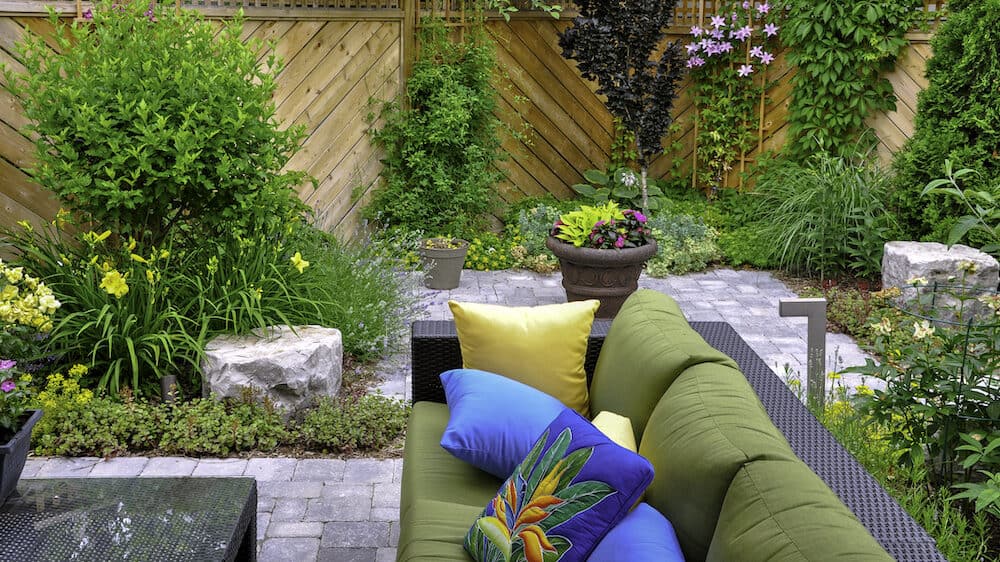
Now that you know all the ins and outs of creating an outdoor living area, you can start designing your ideal space. Remember to define the purpose of your space, follow the design process steps, and consult with a professional before you get started. They can help you choose the best size, shape, and style of outdoor space and put in some of those extra elements for you.
At Torchwood Landscaping, we love helping our clients create beautiful outdoor living areas that fit their needs and personality. Contact us today to see how we can transform your backyard into the perfect living space.
